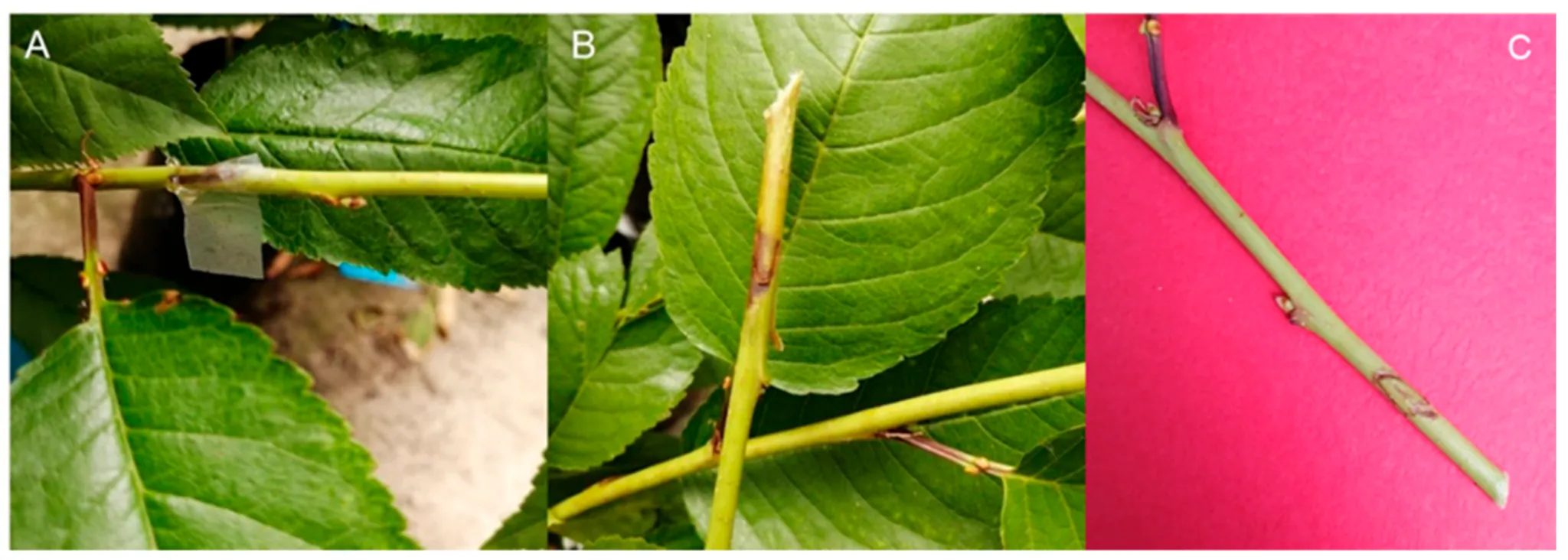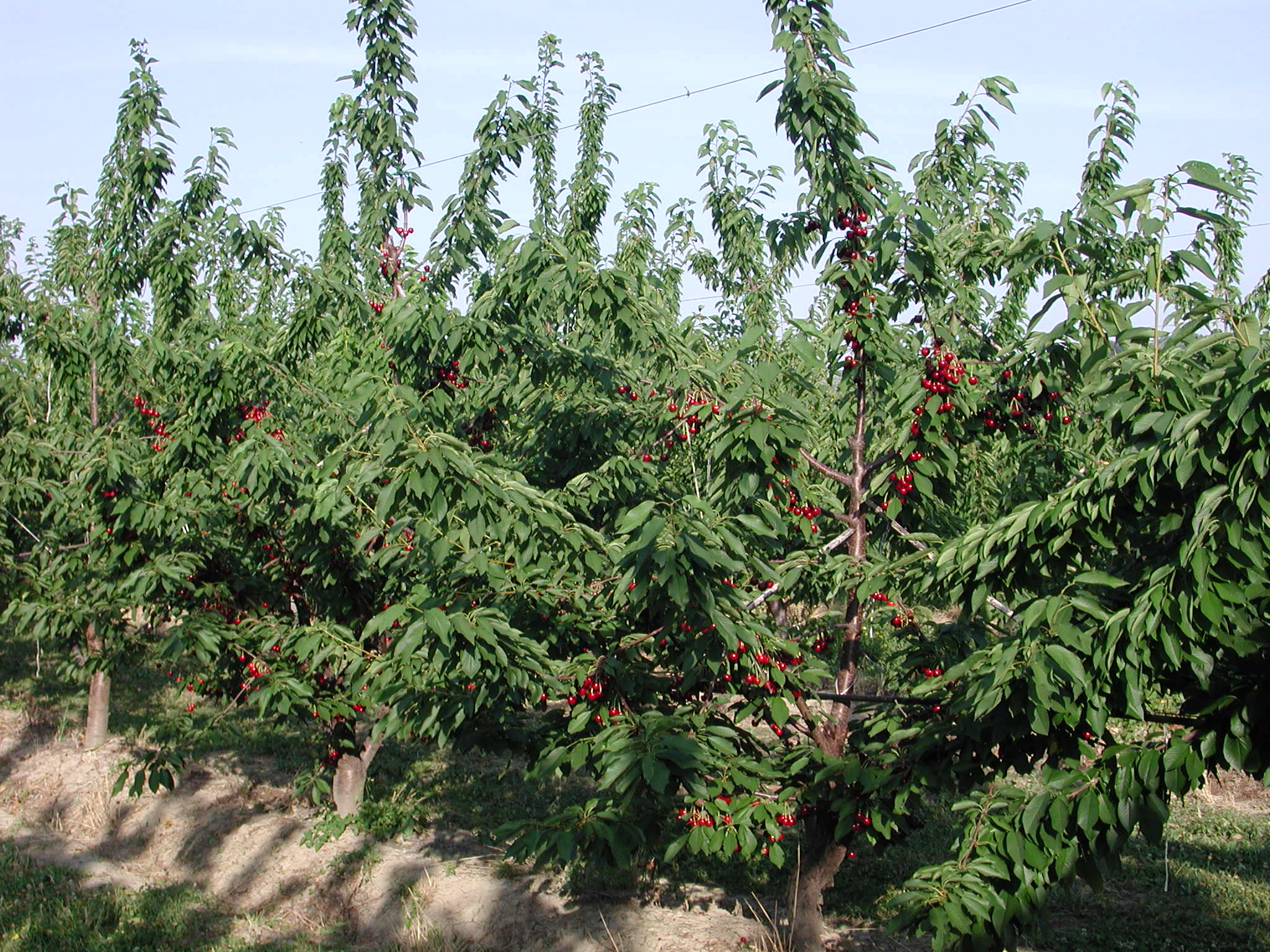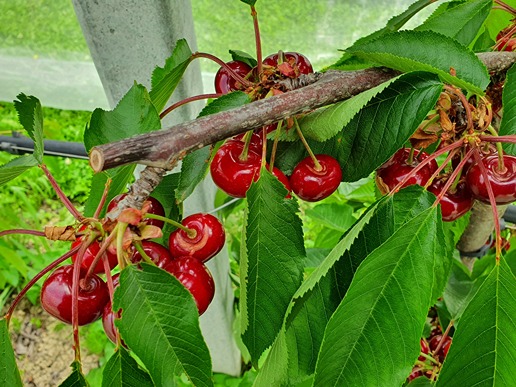Sweet cherry bacterial canker, caused by the pathogen Pseudomonas syringae pv. syringae, is a disease that threatens cherry production worldwide.
In particular, in Chile, losses can reach up to 40% in affected orchards.
For this reason, in a recent study, researchers analyzed, at the transcriptomic level, the responses of two sweet cherry cultivars, "Santina" and "Bing", known for their different susceptibility to infection.
Analysis of cultivars
The young plants used in the experiment, grafted onto “Gisela 12” rootstock, were cultivated at the "Centro de Estudios Avanzados en Fruticultura" in Chile.
Using RNA-seq technology, the gene expression profiles were compared at one and seven days after artificial inoculation with P. syringae pv. syringae.
The results showed that "Santina", the less susceptible cultivar, displayed a faster and more intense response: after just one day from inoculation, it exhibited over three times more differentially expressed genes (DEGs) compared to "Bing".
At seven days, by contrast, "Bing" showed a substantial increase in DEGs, indicating a delayed response that coincided with the appearance of symptoms.
Pathogen recognition and defense
This suggests that rapid pathogen recognition is a key factor in potential tolerance or resistance.
In "Santina", already from day one, a lower expression of photosynthesis-related genes was observed, interpreted as a strategy to reallocate energetic resources towards defense mechanisms.
Additionally, genes involved in the synthesis of secondary metabolites and defense-related plant hormones such as jasmonic acid and abscisic acid were activated.
 Figure 1. Symptoms at 7 dpi in cherry sweet trees inoculated with Pseudomonas syringae pv. syringae 11116B1 strain: (A) symptoms of gum secretion; (B) symptoms of necrosis; (C) mock-inoculated
Figure 1. Symptoms at 7 dpi in cherry sweet trees inoculated with Pseudomonas syringae pv. syringae 11116B1 strain: (A) symptoms of gum secretion; (B) symptoms of necrosis; (C) mock-inoculated
Another relevant aspect is the activation of mechanisms involved in cell wall remodeling: in "Santina", there is an early activation of genes encoding enzymes such as XTHs, associated with greater wall rigidity, which would hinder bacterial penetration.
Signaling pathways and autophagy
PRRs (pattern-recognition receptors) such as WAK and LRR also showed earlier activation in "Santina", leading to a faster pathogen recognition.
Another important response analyzed in the study is the salicylic acid (SA) signaling pathway, crucial against biotrophic pathogens like P. syringae.
In "Santina", genes such as NDR1, PR-4, and the transcription factor WRKY46 were activated as early as one day post-inoculation, whereas in "Bing", their activation was delayed until the seventh day.
"Santina" also showed activation of genes linked to cellular autophagy, such as PHOS32, BLUS1, and SRO2, suggesting an important role of cellular repair mechanisms in defense against this pathogen.
Conclusions and implications
Conversely, although "Bing" also activates similar mechanisms, the delay in response, occurring when the damage is already visible, reduces its overall effectiveness.
In conclusion, after inoculation with Pseudomonas syringae pv. syringae, the more effective defense response of "Santina" appears to rely on a combination of rapid pathogen recognition, early activation of metabolic pathways, strengthening of the physical barrier, and oxidative stress control.
These findings provide valuable information for sweet cherry breeding, suggesting that selecting cultivars that, upon pathogen interaction, show early expression of genes such as PR-10, NDR1, WRKY46, and SDR7, or down-regulation of genes like PAE, could promote the development of varieties more resistant to bacterial canker.
At the same time, understanding molecular mechanisms lays the foundation for developing integrated defense strategies and new tools to enhance key defense pathways in plants, thus improving the resilience of sweet cherry production.
Source: Carreras, C., Zamorano, A., Villalobos-González, L., Pimentel, P., Pizarro, L., Beltrán, M. F., Cui, W., Pinto, M., Figueroa, F., Rubilar-Hernández, C., Llanes, A., Bertaccini, A. & Fiore, N. (2024). Pseudomonas syringae Pathovar syringae Infection Reveals Different Defense Mechanisms in Two Sweet Cherry Cultivars. Plants, 14(1), 87. https://doi.org/10.3390/plants14010087
Image source: Carreras et al., 2024; Plantwise Knowledge Bank
Andrea Giovannini
University of Bologna (ITA)
Cherry Times - All rights reserved













